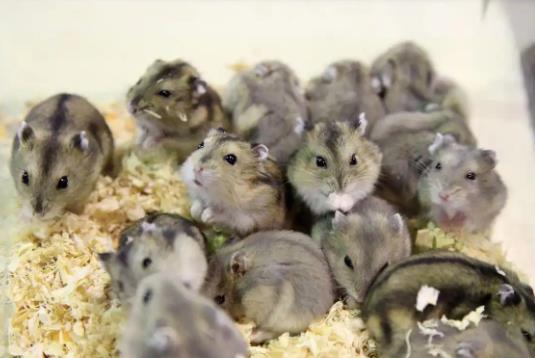After a hamster gives birth to babies, it requires special care to ensure the health and safety of both the mother hamster and the baby hamsters. Here are specific care suggestions:

1. Keep It Quiet and Minimize Disturbance
The mother hamster is extremely sensitive after giving birth. Any noise or interference may cause her to be under excessive stress, and she may even abandon or eat her babies.
Try to avoid touching the baby hamsters, especially during the first two weeks after their birth, because the smell of humans may make the mother hamster refuse to feed her babies.
If you need to clean the cage, you can do a partial cleaning of the obviously dirty areas to avoid disturbing the mother hamster and the babies.
2. Provide Ample Nutrition
The mother hamster needs a large amount of nutrition during the lactation period, especially protein and calcium. You can feed her high-protein foods such as hard-boiled eggs, chicken breast, mealworms, etc.
Ensure there is an adequate supply of water. It is recommended to use distilled water or boiled water, and avoid using tap water.
Provide fresh vegetables and fruits in moderation, but be careful not to overfeed, as this may cause diarrhea.
3. Pay Attention to Environmental Management
Keep the temperature in the cage stable, preferably between 18°C and 26°C, to prevent the baby hamsters from dying due to being too cold or too hot.
Use dust-free wood shavings or clean toilet paper as bedding to ensure the warmth and comfort of the baby hamsters.
Avoid direct exposure to strong light and drafts, and keep the environment in the cage dim and quiet.
4. Wean and Separate the Cages Gradually
Baby hamsters usually start weaning 3 to 4 weeks after birth. At this time, you can gradually provide hamster food and molar supplies suitable for the baby hamsters.
For solitary hamster species (such as Syrian hamsters), it is necessary to separate them into different cages in a timely manner to avoid fighting due to strong territorial awareness when they reach adulthood.
5. Observe the Condition of the Baby Hamsters
Regularly observe the activities of the baby hamsters and the behavior of the mother hamster from a distance to ensure that the baby hamsters are healthy and the mother hamster is feeding them normally.
If you find that the baby hamsters are obviously small and thin or the mother hamster has insufficient milk, you need to adjust the mother hamster's diet and environment in a timely manner.
By following the above measures, you can effectively ensure the health and safety of both the mother hamster and the baby hamsters, and help the baby hamsters grow up smoothly.
